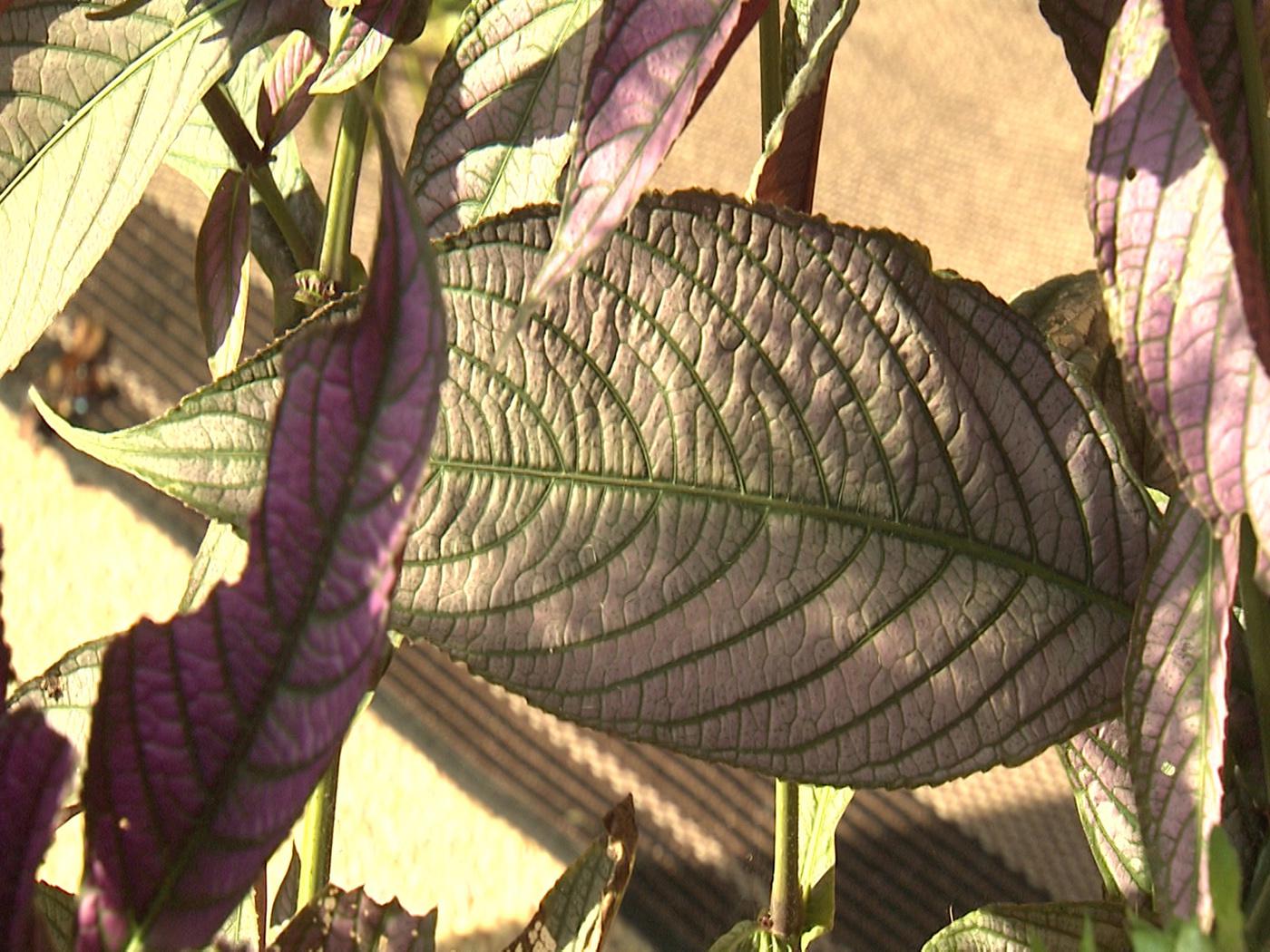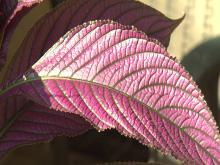Information Possibly Outdated
The information presented on this page was originally released on September 17, 2012. It may not be outdated, but please search our site for more current information. If you plan to quote or reference this information in a publication, please check with the Extension specialist or author before proceeding.
Update containers for fall with Persian shield
As we move into fall I’ve been paying attention to the combination containers that have looked so good through the summer months. Many of the flowering plants have started to fade. Colorful foliage plants can now transition from supporting roles to the stars of the containers.
One foliage plant in particular has been a standout lately. Persian shield, which is known botanically as Stobilanthes dyerianus, is typically considered a houseplant. But when added to a combination container, it has a lot of potential as a landscape plant.
Persian shield’s elliptically shaped leaves can be up to eight inches long. The foliage is shades of purple, pink, and silver and has an iridescent sheen. The colors are more prominent when the plant is exposed to lots of light and are muted when it is planted in the shade. Morning sun is best for color development, but I have seen combination containers with a western exposure that have been absolutely breathtaking. Prominent bright green veins that contrast with the other colors are particularly attractive.
Persian shield likes to grow in a well-drained potting mix or landscape soil. For best growth, the soil needs to be consistently moist, whether in a container or in the landscape. Applying a water-soluble fertilizer every other week will keep growth vigorous and steady. If you prefer, you can apply a monthly dose of 14-14-14 or a similar controlled-release fertilizer.
At times, Persian shield may appear to be getting a little leggy. It can reach as high as four feet if left alone. Don’t be afraid to do a bit of corrective pruning. This plant will respond well, and a little trimming will keep growth bushy and dense.
Because Persian shield is typically grown as a houseplant, it will overwinter very well. You could repot the plant and move it inside for the winter months. But if the plant is big, this method may be a little cumbersome in small indoor spaces.
Another easy way to overwinter Persian shield is to take cuttings. Remove four to six inches of growth from the end of a stem. Place in a glass of water on your windowsill, and roots will soon form. When transplanting cuttings into a small container, use good potting mix.
While it’s late in the year to be planting combination containers, consider using Persian shield in at least one of your combination containers for next year and after.










